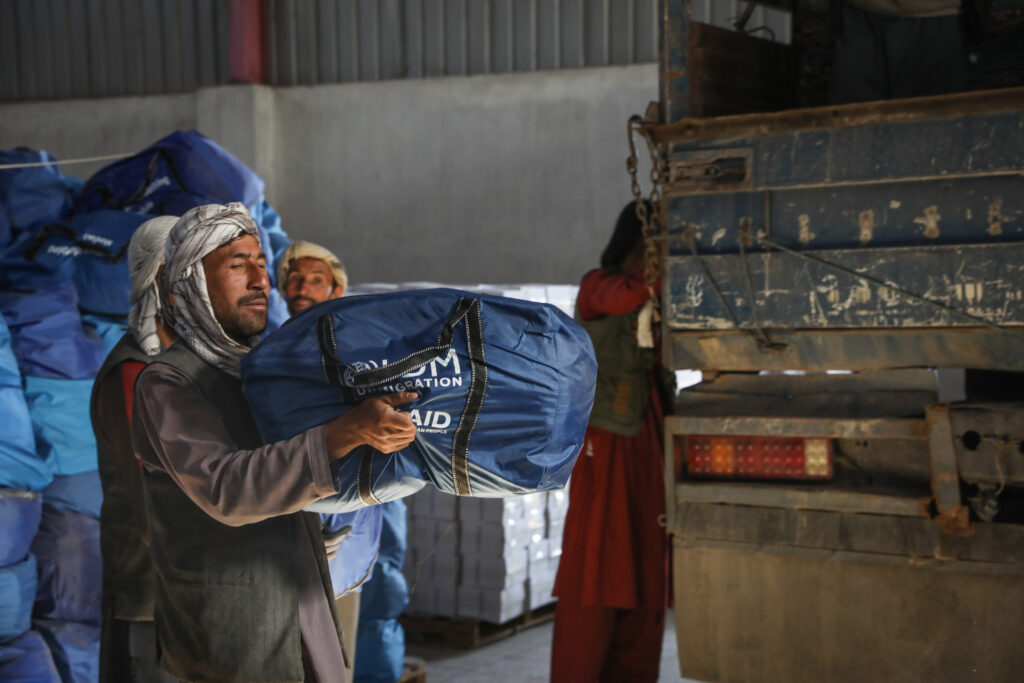The situation in Afghanistan is compounded by escalating food insecurity, constrained livelihood opportunities, and conflict-driven displacement and complex protection needs. IOM continues to address humanitarian needs and reduce protection risks for people on the move, while working towards mitigating the impact of ongoing and new crisis events. Throughout IOM’s response the inclusion of women is mainstreamed, including in economic empowerment and resilience programming.
USA for IOM’s briefing “IOM’s Role and the Humanitarian Outlook in Afghanistan,” gathered partners and practitioners in Washington D.C. and on-line for an informative conversation with IOM Afghanistan Chief of Mission Maria Moita, moderated by Anne Richard, USA for IOM Board Member.
Following the regime change of August 2021, millions of people in Afghanistan have increasingly urgent humanitarian needs. There is a real risk of humanitarian catastrophe, driven by escalating food insecurity, constrained livelihoods opportunities, as well as conflict-driven displacement and complex protection needs. Development needs are rising due to consecutive droughts and economic contraction, leading to significant drops in income and surging commodity prices.
IOM continues to address humanitarian needs and reduce protection risks for people on the move while working towards mitigating the impact of ongoing and new crisis events, like the major earthquakes that struck in June 2022 and October 2023. To save lives and livelihoods, IOM strives to address migration and displacement drivers, strengthen institutional capacities for socioeconomic recovery, and enable communities to transition and recover on a path towards sustainable and inclusive development.


IOM’s coordinated humanitarian response includes access to protection, water, hygiene, health services, and basic daily needs through the distribution of food, temporary shelter, and other essentials across all 34 provinces, particularly in disaster-affected areas. Businesses and individuals receive financial support and training to create employment opportunities and support durable solutions. The inclusion of women is mainstreamed throughout the response, including in economic empowerment and resilience programming.

“On the day of the first earthquake we were already loading trucks with non-food items and tents to the most affected areas. One of the added values of IOM is our presence across the country, that we can mobilize response very quickly. Despite the challenges, staff are working day and night to provide assistance.”
Maria Moita - IOM Afghanistan Chief of Mission Tweet
“On the day of the first earthquake we were already loading trucks with non-food items and tents to the most affected areas. One of the added values of IOM is our presence across the country, that we can mobilize response very quickly. Despite the challenges, staff are working day and night to provide assistance.”
Maria Moita - IOM Afghanistan Chief of Mission Tweet
Ongoing programming continues to support relief operations in Afghanistan in response to mounting, complex humanitarian needs. Programming addresses the causes of migration and displacement, strengthening capacities for socioeconomic recovery, and enabling communities to transition and recover on a path towards sustainable and inclusive development.